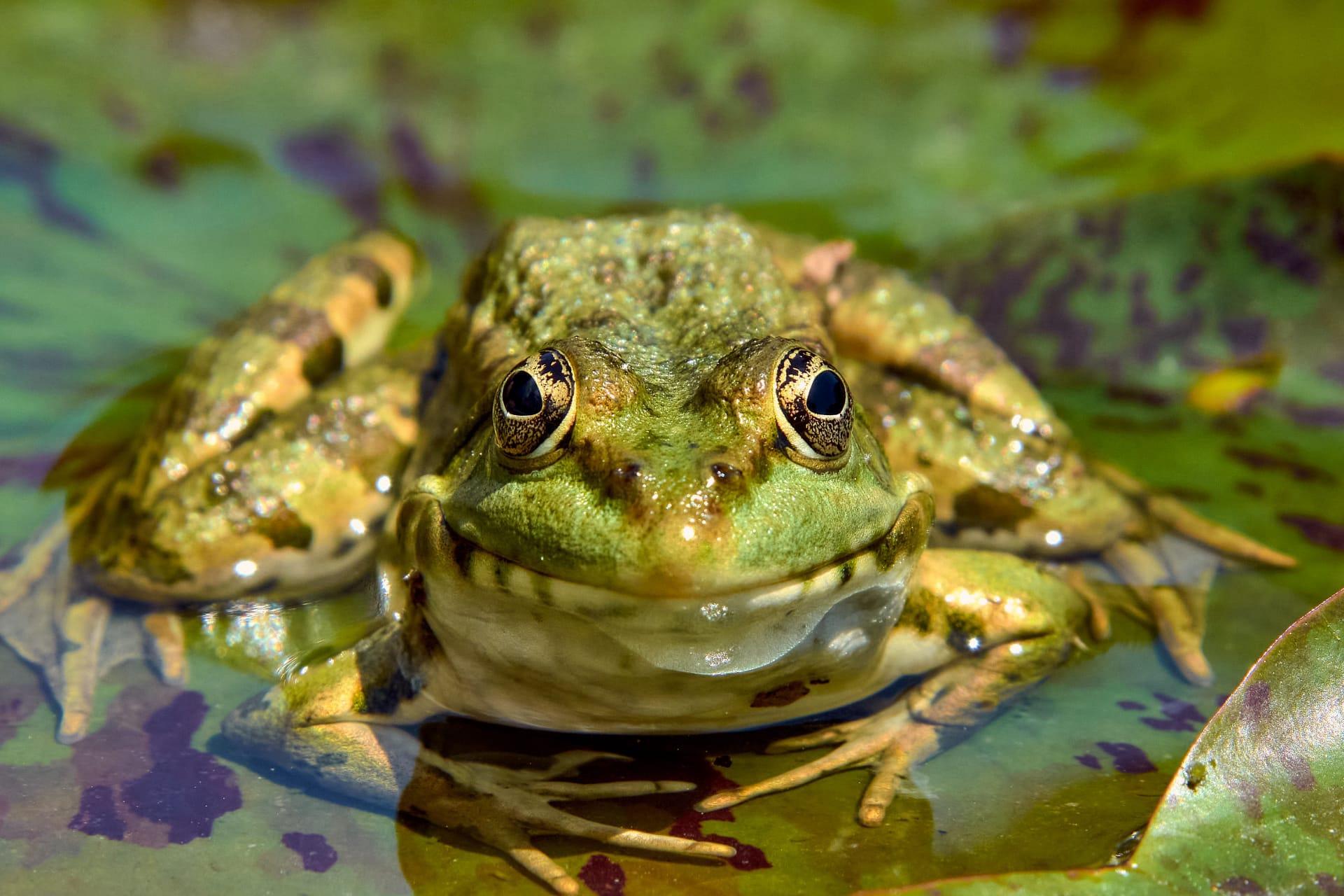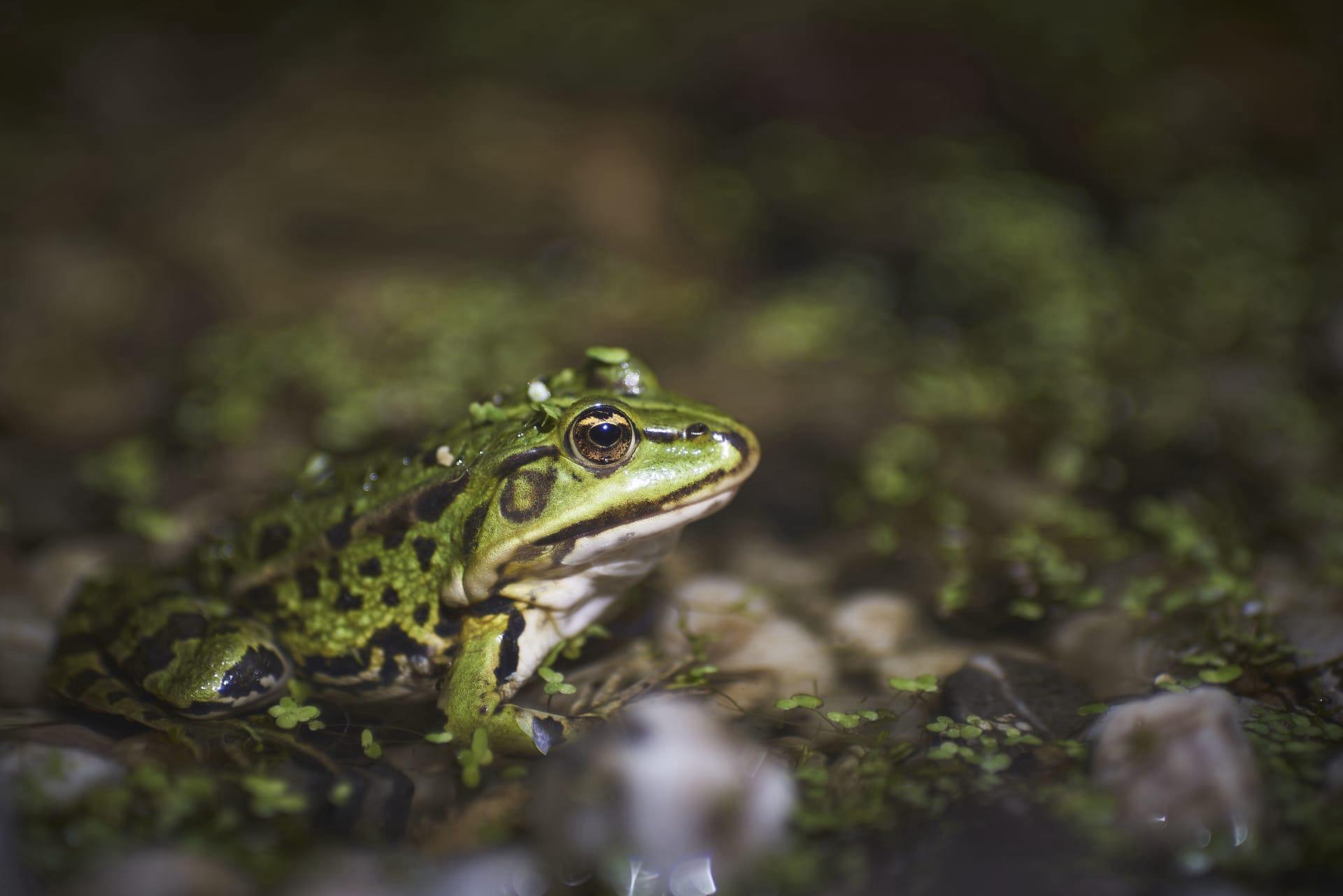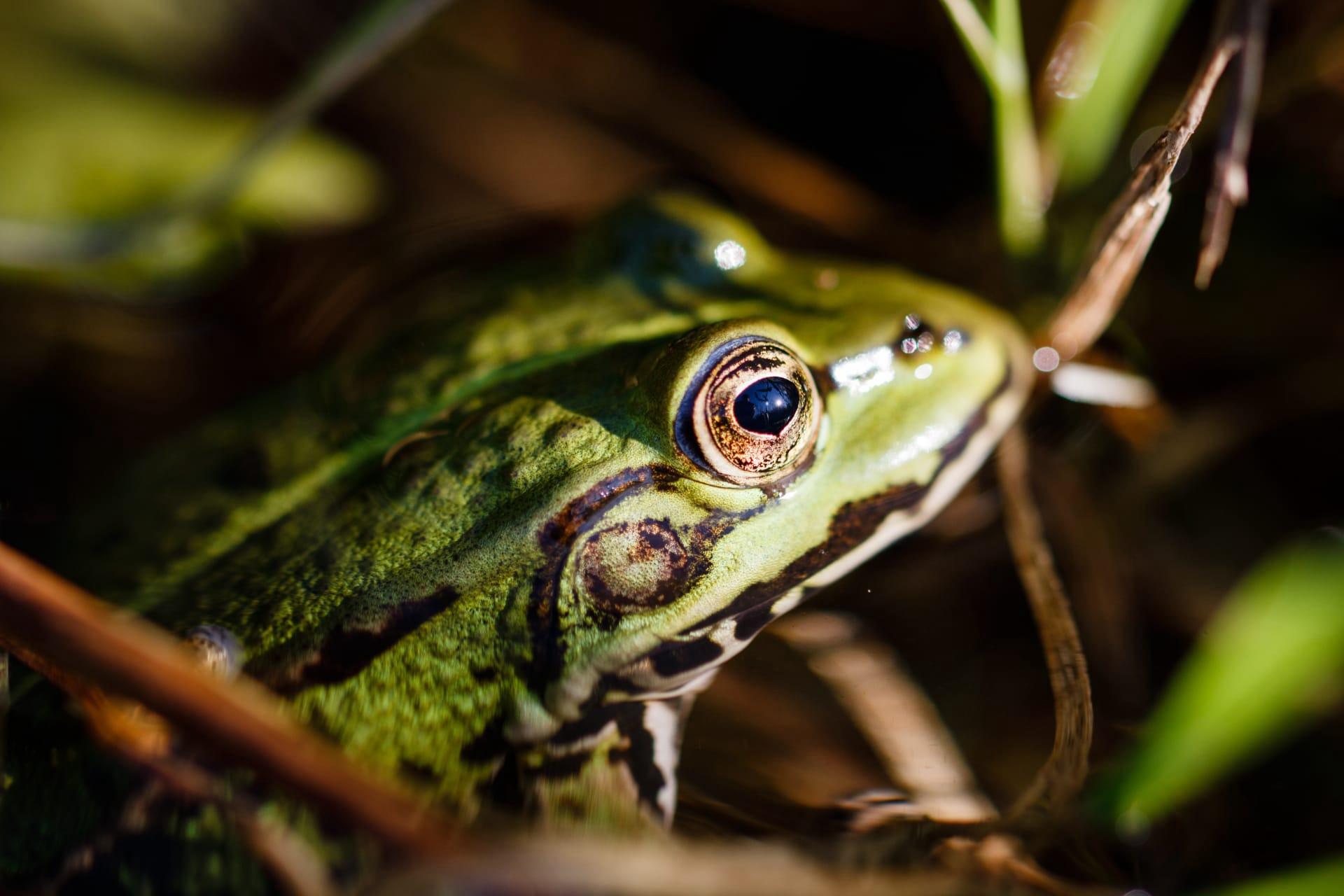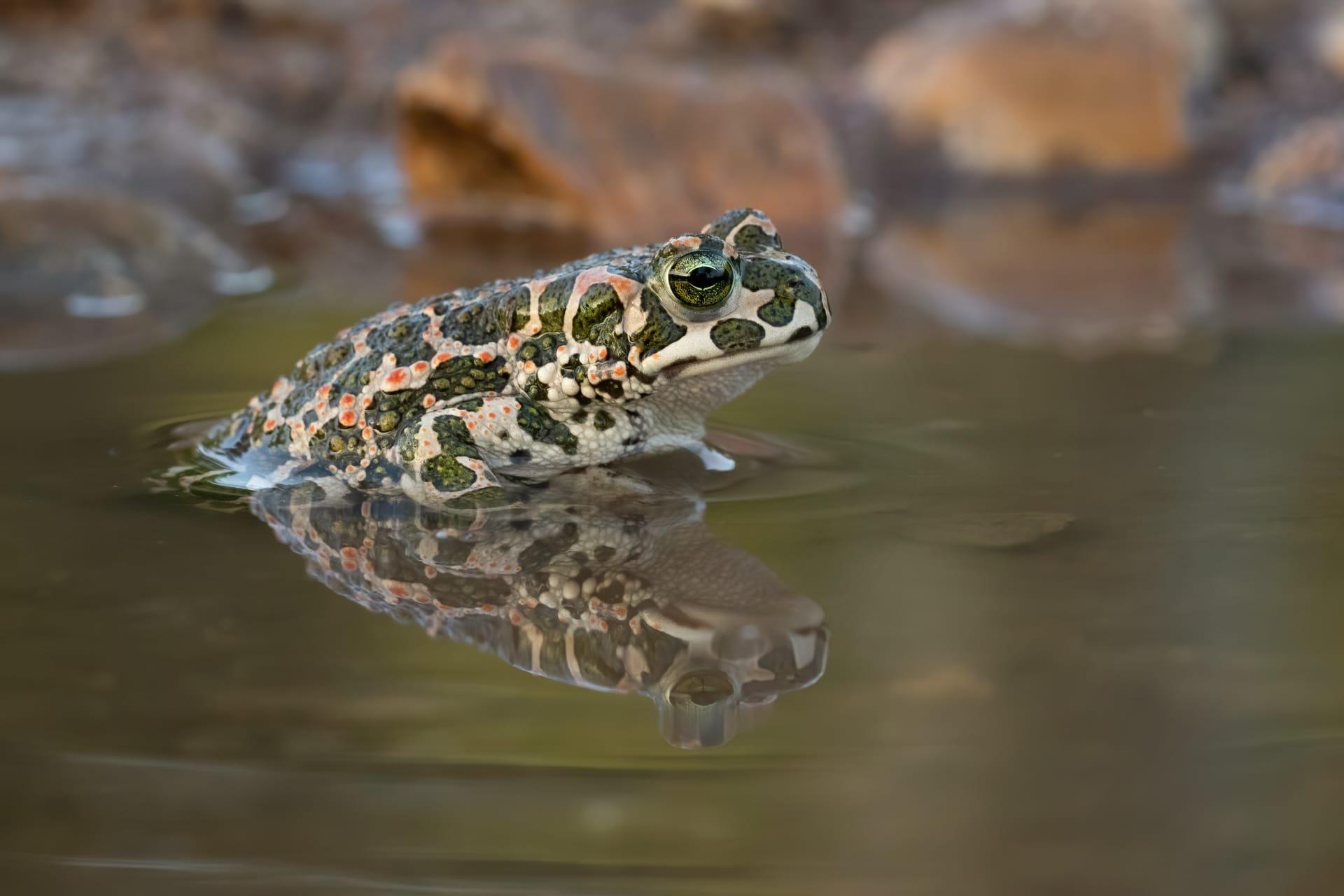Leopard Frog
- Home /
- Mini Encyclopedia /
- Animal /
- Leopard Frog
1
The Leopard Frog, scientifically known as Lithobates pipiens, is a distinct species in the amphibian class. Belonging to the family Ranidae, this species stands out for its unique spotted pattern, reminiscent of a leopard's coat. These frogs are generally characterized by their sleek, moist skin, varying in shades of green and brown, speckled with prominent dark spots. Adult Leopard Frogs typically measure between 2 to 4 inches in length, showcasing a remarkable adaptability in size and coloration, which plays a crucial role in their survival strategies.
Leopard Frogs are predominantly found in North America, with their range extending from the northern parts of Canada to the southern regions of the United States. These amphibians favor damp, grassy environments such as marshes, wetlands, and the edges of lakes and streams. They have a particular affinity for water bodies that are well-vegetated, as these provide ample cover and food sources. The distribution of Leopard Frogs is greatly influenced by environmental conditions, especially temperature and humidity. They thrive in temperate zones but can also adapt to varying climatic regions, demonstrating their remarkable ecological versatility.

2
Question: Do Leopard Frogs change color like chameleons to camouflage themselves?
Answer: Contrary to popular belief, Leopard Frogs do not possess the ability to change their skin color like chameleons. Their skin coloration, while variable among individuals, is genetically determined and remains relatively constant throughout their life. The misconception likely arises from observing frogs in different environments, where lighting and background can give the illusion of color change. However, their natural coloration and patterning are inherently well-suited for camouflage in their typical grassy and marshy habitats, aiding them in avoiding predators and ambushing prey.

3
Leopard Frogs have developed a range of survival strategies to thrive in their habitats. One key strategy is their reproductive approach. They lay thousands of eggs in water, increasing the odds of offspring survival despite the absence of parental care. These eggs hatch into tadpoles, which undergo metamorphosis to become frogs, a process that allows them to exploit different ecological niches during their life cycle. Another survival tactic is their diet; they are opportunistic feeders, consuming a wide variety of insects, worms, and even small aquatic animals, which ensures food availability in various conditions.
Seasonal behavior is another significant aspect of their survival. Leopard Frogs hibernate during winter, burrowing in mud or under leaf litter, effectively conserving energy when food is scarce. In the breeding season, males produce distinctive mating calls to attract females, a critical behavior for species propagation. Their ability to jump long distances and swim quickly also serves as an effective escape mechanism from predators, showcasing their physical adaptability in the face of danger.

4
In the ecosystem, Leopard Frogs play a pivotal role as both predators and prey. As predators, they help control the population of insects and other small creatures, maintaining a balance in the food web. This predatory role also impacts the health of their habitats, as they contribute to controlling pests that could otherwise harm plant life. Additionally, their consumption of various organisms aids in nutrient cycling, contributing to ecological health.
As prey, Leopard Frogs are a vital food source for a variety of animals including birds, snakes, and larger mammals. Their presence in the food chain signifies a healthy ecosystem, as they are indicators of environmental quality. A decline in their population can signal ecological imbalance, making them crucial for monitoring environmental health. Furthermore, their sensitivity to pollutants makes them excellent bioindicators, helping scientists assess the health of aquatic and terrestrial ecosystems.

5
Film: "The Secret World of Frogs" is a documentary produced in the United States in 2018. This captivating film delves into the diverse and colorful world of frogs, highlighting various species, including the Leopard Frog. It explores their unique behaviors, life cycle, and the challenges they face in the wild, providing viewers with a comprehensive understanding of these fascinating amphibians.
Book: "Frogs: The Animal Answer Guide" is an informative book published in the United States in 2011 by authors Mike Dorcas and Whit Gibbons. This book offers insights into the lives of different frog species, including the Leopard Frog. It covers aspects like their behavior, ecology, and the environmental threats they face, making it a valuable resource for anyone interested in amphibians.
Book: "A Natural History of Amphibians" by Trevor Beebee and Richard Griffiths, published in the UK in 2000, provides an in-depth look into the world of amphibians, with a section dedicated to the Leopard Frog. This book examines their evolutionary history, physiological characteristics, and their role in ecosystems, offering a comprehensive view of amphibians, including the intriguing Leopard Frog.